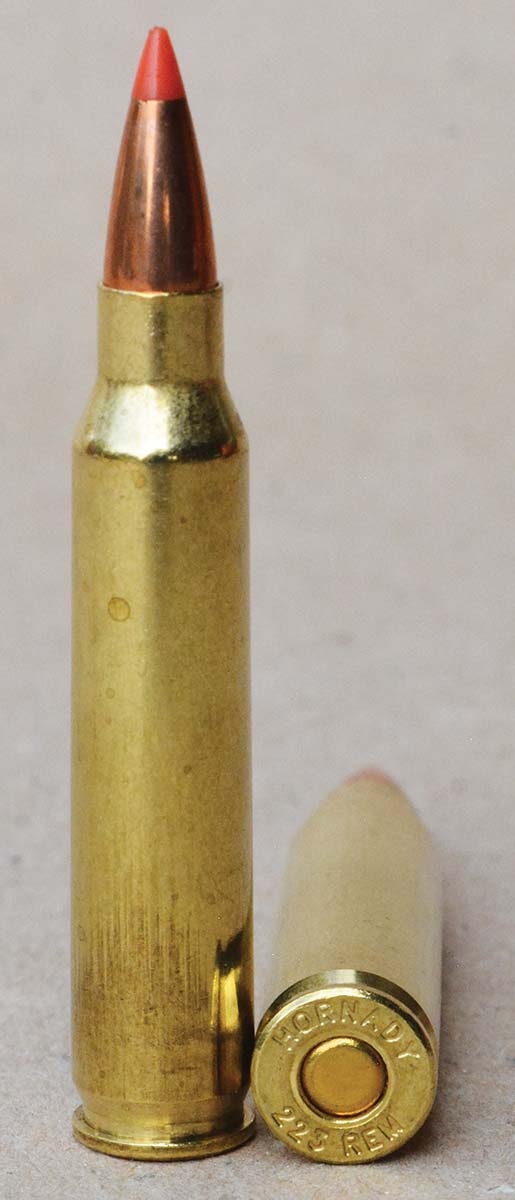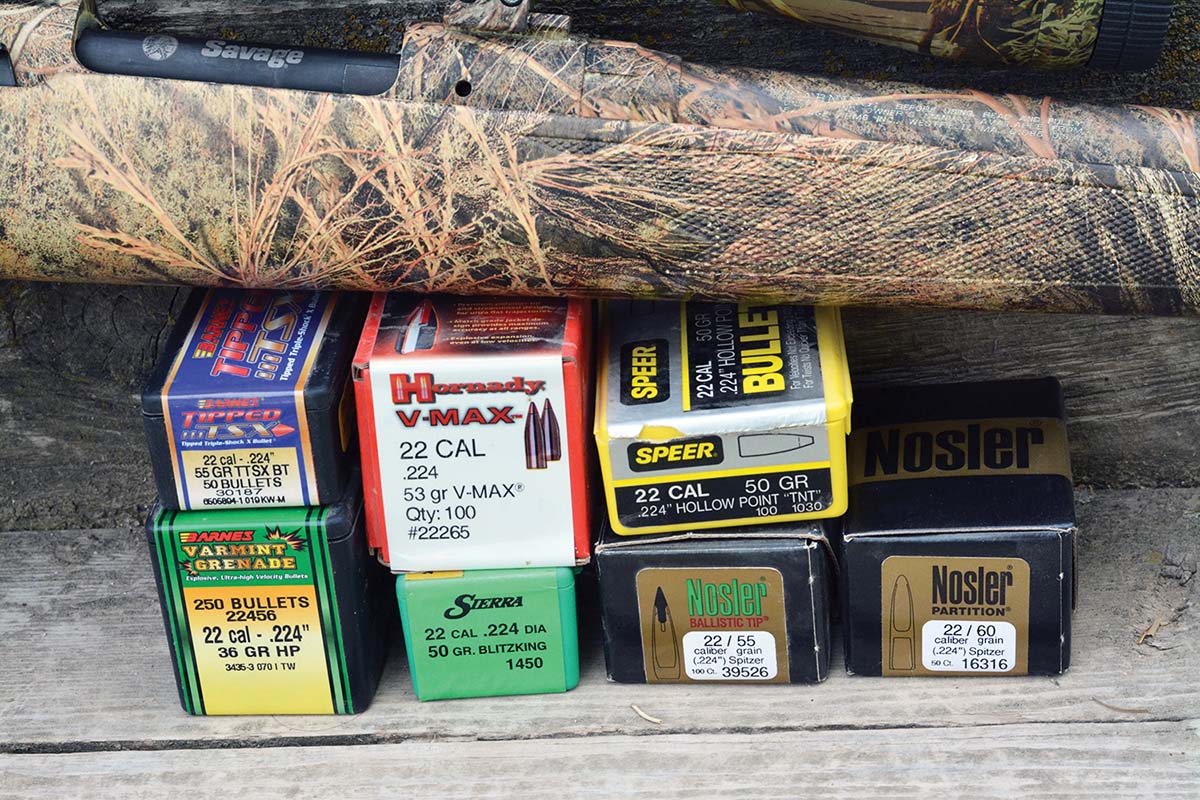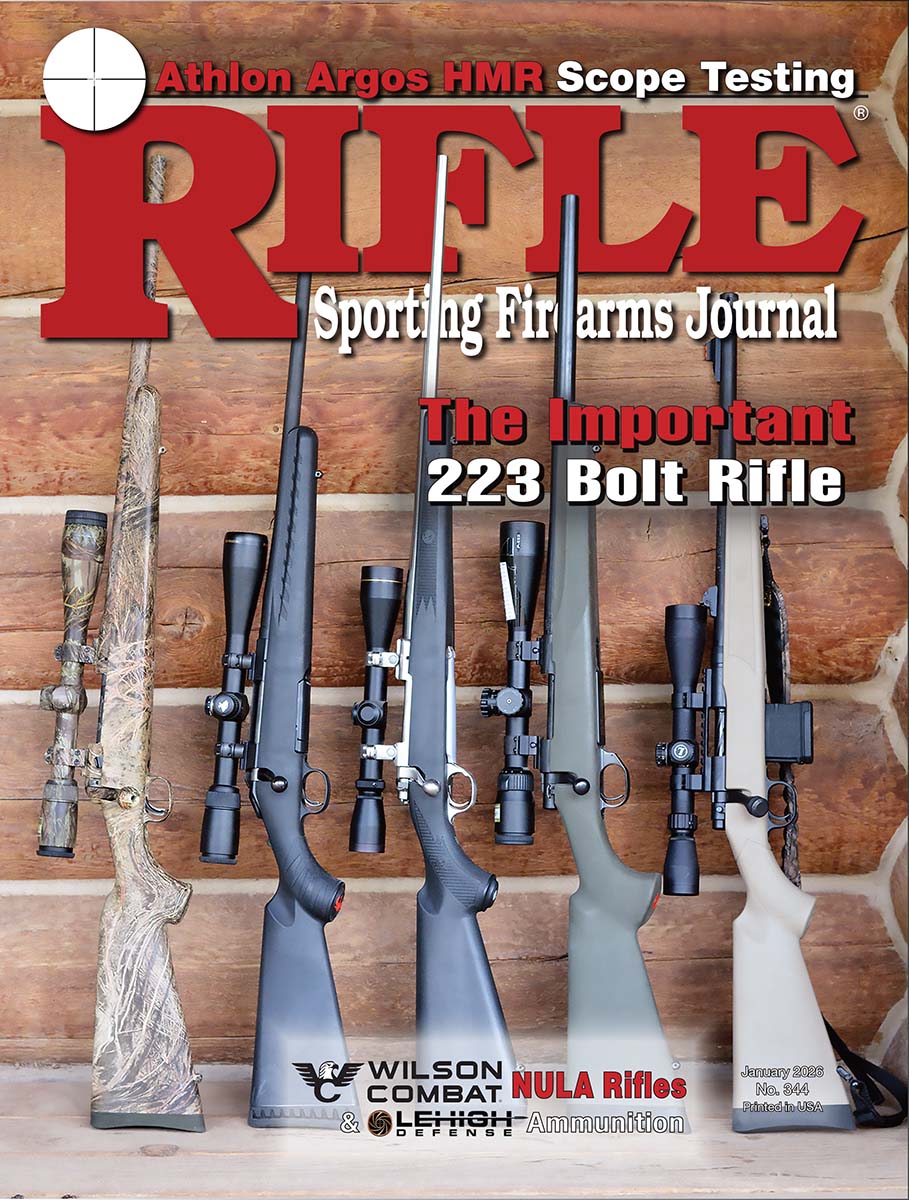Mostly Long Guns
An Important Rifle: The Bolt-Action 223 Remington
column By: Brian Pearce | January, 26


Critics did not like the short neck of the 223, yet it proved very accurate and produced around 150 to 200 feet per second (fps) higher velocity than the beloved 222, or “deuce” as it was affectionately called, giving it a bit more range. As is usually the case with a military cartridge, the 223 was destined to become hugely popular among civilians, and most bolt-action rifle manufacturers began offering guns chambered for it. (Please Note: The 5.56 mm Ball M193 was interchangeable with the 223; however, with the introduction of the 5.56 NATO in 1980, the two cartridges are generally not fully interchangeable because the chambers are cut differently. The 5.56 NATO chamber typically has a longer leade and the pressure measurement methodology differs between the two. Even though SAAMI does not recommend mixing them, in my experience, in a pinch, 5.56 loads can be fired in bolt-action rifles. It is fine to fire 223 Remington ammunition in a rifle with a 5.56 NATO chamber. This is a complicated subject that could be a very long column, and covering it fully would take us away from today’s discussion. We will need to treat that topic another day.)

We have some truly outstanding varmint, hunting and defense bullets that have been developed over the past several decades; they typically weigh between 40 and 60 grains, although some hunting bullets (not to be confused with long-range match bullets) weigh up to 70 grains. Some boast very high ballistic coefficients for their weight and can be pushed to impressive velocities to extend the 223’s effective range. One example is the outstanding Hornady 53-grain V-MAX, which has a .290 G1 BC and can easily reach 3,300 fps with many powders and even 3,450-plus fps with select powders from a 22-inch barrel. Hornady offers this bullet in their Superformance factory load with a listed velocity of 3,465 fps. In addition to stretching the 223’s range, it is super accurate and pure dynamite on coyotes, rock chucks, and similar varmints. Nosler offers its excellent Ballistic Tip Varmint in 40-, 50-, 55- and 60-grain weights; these bullets leave little to be desired in terms of accuracy and ultra-reliable terminal performance on varmints. In addition to being available as components for handloaders, they are offered in the premium NoslerCustom factory loads.

For varmints and pests, select premium loads with high ballistic coefficient bullets, whether handloads or factory loads, are effective out to 500 yards in a super-accurate rifle topped with a scope that is up to the task. Deer hunters should limit distances to around half that figure as a maximum.
Based on my favorite bullets for field use, the 1:9 twist offers 100 percent reliable stabilization out to 500 yards and top accuracy for my preferred bullets for deer to coyotes, with 1:8 running a very close second. If a shooter plans to use the hunting bullets mentioned above but also heavier bullets for match work that weigh 68, 69, 75 or 80 grains, then the 1:8 twist will have an advantage.

I often have a rifle in each of my winter cattle-feeding pickups from November through May and even inside the roof of a couple of tractors. When coyotes harass or kill a calf, one shot is all it takes to end the predator’s career. After the shot, the bolt is left closed with the empty case in the chamber while I proceed with winter chores. It is not a good idea to have a live round in a rifle’s chamber in a pickup or on a tractor. In this manner, I do not have to rely on a safety. By comparison, an AR-pattern rifle will eject the empty case out the right side, which often ends up in the defrosting vents and automatically chambers another round. At that point, I have to remove the magazine, clear the chamber, drop the striker, put the live round back in the top of the magazine and reinsert the magazine. In essence, the bolt action is safer and more convenient in my world. The triggers of many modern bolt rifles are much, much better than those in AR-pattern rifles right out of the box. On average, bolt rifles, even those with a modest price, are more accurate than run-of-the-mill ARs.
In looking through my odd accumulation of bolt-action 223 rifles from Mossberg, Savage, Weatherby, Ruger, Howa/Legacy Sports and others, it is rare to find a rifle that will not stay inside 3⁄4 of an inch, and most will stay inside 1⁄2 inch with select loads. When riding horses, ATVs, or hunting on foot, the bolt rifle is far more compact and easier to carry. A bolt action is simple, incredibly tough and rugged and is offered in many variations.

Savage has long been known for its modestly priced Model 110/10 rifles that are highly accurate; the AccuTrigger offers a light, crisp pull right out of the box. Another remarkable rifle is the Weatherby Vanguard, developed in conjunction with Roy Weatherby in 1971. It is an outstanding rifle with more traditional features, including a hinged floorplate and cold-hammer-forged barrel, and it comes standard with an accuracy guarantee. Most of the rifles I have worked with will easily group under 3⁄4 inches. The Howa Model 1500, imported by Legacy Sports, is essentially the same rifle as the Weatherby Vanguard, with base models available for around $600. The Ruger American (now offered by Glenfield as a Model A) and American II have been huge commercial successes; they boast great accuracy at modest cost and are offered in both 223 and 5.56 NATO chambers. Most versions are fitted with a detachable AR-style magazine, and street prices start at less than $600. Ruger still offers the super-rugged and reliable M77 Hawkeye Laminate, but rising production costs have pushed street prices to around $1,100 or so. In my opinion, these rifles are worth every cent.
The 223 boasts low-cost, lightweight ammunition – about 28 pounds per 1,000 rounds – that is available worldwide. It offers a high level of efficiency, accuracy, long barrel life, and great versatility due to a huge selection of bullet options, especially for handloaders. Plus, it is fun to shoot. The selection of bolt-action rifles is extensive, with variations for nearly any practical application, from hunting to defense. As indicated, a 223 bolt action plays an important role in my rifle battery.


